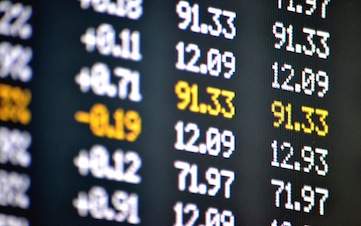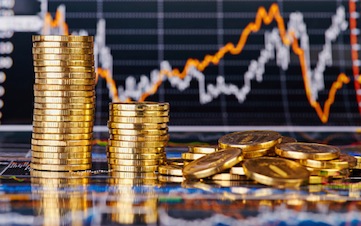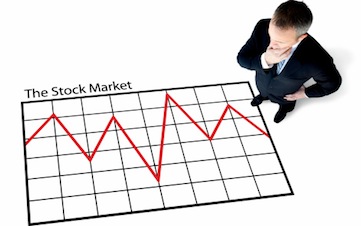10 Worst ETFs for Your Portfolio
When SPDR S&P 500 ETF, the first exchange-traded fund, made its debut in 1993, Whitney Houston topped the charts, shoppers were snapping up Beanie Babies and Cheers was in its final season.


When SPDR S&P 500 ETF, the first exchange-traded fund, made its debut in 1993, Whitney Houston topped the charts, shoppers were snapping up Beanie Babies and Cheers was in its final season. The newfangled gizmo was an immediate success. By the end of its first year, SPDR S&P 500 (SPY), which tracks Standard & Poor’s 500-stock index, held $500 million in assets. But that was only the beginning. The number of ETFs and similar products today has swollen to more than 1,600, with combined assets of $1.8 trillion.
The first ETFs clearly filled a need. They provided investors with low-cost vehicles for tracking well-known market benchmarks such as the S&P 500 and the Nasdaq Composite index, while allowing investors to get in and out of a fund anytime throughout the trading day.
But with success has come excess. Hallmarks of many of the latest exchange-traded products are complexity, narrow focus and heightened risk through the use of leverage. In other words, many of these gadgets are dangerous to your financial health.
With that in mind, we’ve come up with a list of 10 categories of exchange-traded products that you rarely want to put in your portfolio.

Leveraged ETFs
- What are they? Also known as ultra funds, these investments aim to return double or triple the return of the underlying index.
- Why you don’t need one: Do you really have the fortitude to stick with an investment that gyrates two or three times more than the index it tracks?
- Who are they for? Traders with short time horizons and cast-iron stomachs. Clairvoyants, too.
Moreover, because of the way they’re structured, leveraged funds can promise to match their index only on a daily basis. And that can lead to some ugly math. With a leveraged ETF you can make the right call on the direction of a particular index but still lose money over an extended period of time. For example, in 2011, ProShares UltraPro S&P 500 ETF (symbol UPRO), which seeks a return of three times its benchmark, lost 11.9%, while the S&P 500 gained 2.1%.

Inverse ETFs
- What are they? These ETFs are designed to return the opposite of the index they track -- aiming to benefit from a decline in the market.
- Why you don’t need one: Divining the direction of a market is tough enough. Betting against a market or a particular index is even tougher, even when it looks as though it’s sure to go down.
- Who are they for? Traders who want to make a short-term bet on a market downturn. Investors sitting on big short-term profits could also use inverse ETFs to cut their tax bill. Say, thanks to a powerful bull market, you have a 30% gain on a stock fund you’ve held for 11 months. You’d like to hang on a bit longer to qualify for favorable long-term capital-gains treatment, but you’re worried that a market correction could begin at any moment. To protect your gains, you could buy an ETF that moves in the opposite direction of a stock market index, hold it for a month and a day, then sell both it and your original investment.
Consider what has happened to investors who have been bearish on the U.S. stock market in recent years. And there have been plenty of reasons for negativity, including global turmoil, dysfunctional leadership in Washington, D.C., and one of the weakest economic expansions ever. Pessimists might have had good reason to buy into ProShares Short S&P500 (SH), which is designed to return the inverse of the S&P 500 index. But since the current bull market began in March 2009, the ETF has lost 75% of its value (or 22.4% annualized) through August 13, 2014.
As with leveraged funds, inverse ETFs can deliver the promised inverse return only on a daily basis. Again, that can lead to disappointing returns over longer periods. In 2008, for example, the MSCI Emerging Markets index lost 53.2%. But ProShares Short MSCI Emerging Markets (EUM) returned only 19.6%. And in 2011, when the Dow Jones U.S. Financial index lost 12.8%, ProShares Short Financials ETF (SEF) gained a paltry 2.0%.

Leveraged Inverse ETFs
- What are they? These investments aim to return two or three times the opposite of the index they track.
- Why you don’t need one: It’s one thing to bet against the market to hedge your portfolio if you feel certain a downturn is coming. But why double or even triple down on that stance? These ETFs carry the perils of both leveraged ETFs and inverse ETFs. And if you invest in a leveraged inverse stock ETF, the odds of making money over the long haul are slim because stocks always rise over the long term. ProShares UltraShort S&P500 (SDS), an ETF that seeks twice the inverse of the return of the S&P 500, illustrates the dangers. Over the past five years through August 13, it lost 85.7% of its value (32.2% annualized). Over the same period, its benchmark gained an annualized 16.4%.
- Who are they for? Big-time bears with a lot of conviction.

Exchange-Traded Notes
- What are they? As close cousins of ETFs, ETNs seek to match the performance of an index. They charge low fees, and you can trade them throughout the day. But ETNs don’t actually own a portfolio of stocks or anything else. Rather, ETNs are unsecured debt, usually issued by an investment bank that promises, upon the note’s maturity, to give you back your original principal, plus or minus the index’s return over the lifetime of the note.
- Why you don’t need one: In addition to your other investment concerns, do you also want to worry about whether an ETN’s issuer can survive the next financial crisis? In 2008, Lehman Brothers, which had issued three ETNs, failed. Investors who held those notes ultimately received just pennies on the dollar.
- Who are they for? ETNs can sometimes do a better job of tracking commodity prices than other kinds of exchange-traded products. If you’re investing in a commodity ETN, opt for one with a wide range of investments and solid backing. For example, Elements Rogers International Commodity ETN (RJI) tracks 36 commodities and is backed by the Swedish government.

Obscure Country ETFs
- What are they? These ETFs aim to sample the economy of a single, small country.
- Why you don’t need one: We can understand that you might want to add a smidgen of fast-growing China or a dollop of powerful Germany to your portfolio. But, seriously, do you really know enough about Qatar or the United Arab Emirates to justify an investment in iShares MSCI Qatar Capped ETF (QAT) or iShares MSCI UAE Capped ETF (UAE)? You might assume these funds represent a good way to get exposure to the oil-rich Middle East. But at last report, both funds were heavily positioned in financial stocks -- and each held less than 10% of its assets in energy.
- Who they are for: Investors who know a country well and want to build their allocations in emerging markets.

Currency Hedged Overseas Sector ETFs
- What are they? These ETFs track an index focused on a specific sector of a foreign economy and hedge to protect investors from fluctuating exchange rates.
- Why you don’t need one: WisdomTree offers a dozen currency-hedged international ETFs. These funds should perform better than unhedged foreign funds during periods when the U.S. dollar is strengthening. (When the buck gets brawnier, money held in foreign currencies gets translated into fewer dollars.)
- Who are they for: We can’t imagine.
Offering hedged overseas funds isn’t, by itself, the worst idea in the world. But WisdomTree goes too far. Only two of its 12 ETFs are diversified among stocks in many foreign companies, and five of the ETFs focus on sectors in Japan -- for example, WisdomTree Japan Hedged Health Care (DXJH). To invest in this ETF, you’re in effect making a bet on the country and the sector and assuming that the yen will weaken against the dollar. As tennis legend John McEnroe would say when he felt aggrieved by an official’s call, “You can’t be serious!”

Narrow Sector ETFs
- What are they? Unlike funds that focus on broad sectors such as health, energy and technology, these ETFs zero in on narrow parts of the market.
- Why you don’t need one: These specialized ETFs are limited to a small field of potential investments and are too concentrated to sample the broader sector. In the race to pull in new cash, firms have launched some outlandish ETFs and waited to see what would take root. In 2007, XShares Advisors launched the HealthShares series of 19 niche ETFs, including a Dermatology & Wound Care fund and a Metabolic-Endocrine Disorders fund. By the end of 2008, the entire lineup was shuttered, largely due to a lack of investor interest. HealthShares is now out of business.
- Who are they for? Investors who would rather buy a few similar stocks than just one.
Still, there’s no shortage of overly niched ETFs. Global X’s Food Industry ETF lineup has been reduced to one member -- Global X Fertilizer/Potash ETF (SOIL), which mimics the performance of an index that invests in companies within the fertilizer industry. Unless you have enough dirt on a specific sector to plant your cash wisely, steer clear.

Single Commodity ETFs
- What are they? Most commodity ETFs invest in a group of things, such as agricultural goods, precious metals or natural resources. Some, however, invest only in one specific commodity.
- Why you don’t need one: Gold bugs will argue for the yellow metal until the cows come home. That’s one reason why SPDR Gold Shares (GLD), which tracks the price of bullion, now holds more than $33 billion in assets. Want to invest in the cows themselves? You can do that with iPath Dow Jones-UBS Livestock Subindex (COW), an ETN that tracks an index of futures contracts for live cattle and lean hogs. Prefer crops over cows? An outfit called Teucrium offers ETFs for four farming staples: Teucrium Corn (CORN), Teucrium Wheat (WEAT), Teucrium Soybean (SOYB) and Teucrium Sugar (CANE). Not a sweet idea, in our view.
- Who are they for? Remember the Duke brothers in the 1983 movie Trading Places? They were certain they knew which way the price of orange juice futures was heading. If you have as much conviction as they did, buy one of these funds. Just remember that in the end, the Dukes got their comeuppance.

Trend ETFs
- What are they: These ETFs hitch their wagon to the latest craze, whether it’s aiming to profit from Bitcoins or the legalization of marijuana.
- Why you don’t need one: Some trends are nothing more than a flash in the pan, while others develop into something important. When the first specialty Internet funds launched in the late 1990s, people were skeptical. But all things Web were hot, and most of the funds were successful until the tech bubble burst in 2000. Other trend-centric investments, such as Element’s Credit Suisse Global Warming ETN, fold relatively quickly.
- Who are they for? Risk-takers who think they can figure out how trends will play out.
It’s virtually impossible to pass judgment on a trend in its early stages. For example, a Bitcoin ETF, which would purchase the digital currency to back the ETF shares, is currently awaiting approval from the Securities and Exchange Commission. In some ways, a Bitcoin ETF isn’t radically different than other currency ETFs: It offers investors exposure to the changing value of a currency without requiring them to buy the actual currency. But unlike, say, the euro or the yen, Bitcoin is an unregulated digital currency that, outside of a relatively small community, has yet to earn its stripes.

Volatility ETFs
- What are they? These ETFs aim to profit from other investors’ fears by tracking an index that measures expected market volatility.Why you don’t need one: ProShares offers a series of volatility ETFs, including ProShares VIX Short-Term Futures (VIXY) and ProShares VIX Mid-Term Futures (VIXM). Both measure the expected volatility of the S&P 500. Over the past three years through August 13, the ETFs produced cumulative losses of 94.6% and 77.5%, respectively. Enough said.
- Who are they for? No one.
Get Kiplinger Today newsletter — free
Profit and prosper with the best of Kiplinger's advice on investing, taxes, retirement, personal finance and much more. Delivered daily. Enter your email in the box and click Sign Me Up.

-
 6 Stunning Waterfront Homes for Sale Around the US
6 Stunning Waterfront Homes for Sale Around the USFrom private peninsulas to lakes, bayous and beyond, Kiplinger's "Listed" series brings you another selection of dream homes for sale on the waterfront.
By Charlotte Gorbold Published
-
 Six Reasons to Disinherit Someone and How to Do It
Six Reasons to Disinherit Someone and How to Do ItWhether you're navigating a second marriage, dealing with an estranged relative or leaving your assets to charity, there are reasons to disinherit someone. Here's how.
By Donna LeValley Published
-
 Stock Market Today: Stocks Surge to Close a Volatile Week
Stock Market Today: Stocks Surge to Close a Volatile WeekIt was another day with a week's worth of both news and price action, but it ended on a strongly positive note.
By David Dittman Published
-
 Stock Market Today: Uncertainty Proliferates: Dow Loses 1,014 Points
Stock Market Today: Uncertainty Proliferates: Dow Loses 1,014 PointsWeaker-than-expected consumer inflation data wasn't enough to stabilize sentiment during another volatile day for financial markets.
By David Dittman Published
-
 Stock Market Today: Tariff Pause Triggers 3,000-Point Dow Rally
Stock Market Today: Tariff Pause Triggers 3,000-Point Dow RallyThe bond market is sending concerning signals as the Trump administration executes its rapid reordering of global trade relationships.
By David Dittman Published
-
 Stock Market Today: Tariff Talks Drive Another Up-and-Down Day
Stock Market Today: Tariff Talks Drive Another Up-and-Down DayTrade war negotiations are happening, but the "fear gauge" is gyrating, and investors, traders and speculators are still searching for signs of a bottom.
By David Dittman Published
-
 Stock Market Today: Trump Pushes Dow Into 2,600-Point Swing
Stock Market Today: Trump Pushes Dow Into 2,600-Point SwingTariffs and trade war weigh on prices across global financial markets, with little light at the end of the tunnel.
By David Dittman Published
-
 Stock Market Today: Dow Drops Another 2,231 Points to Hit a Correction
Stock Market Today: Dow Drops Another 2,231 Points to Hit a CorrectionThe Nasdaq Composite, meanwhile, entered a new bear market with its latest slide.
By Karee Venema Published
-
 Stock Market Today: Dow Dives 1,679 Points on Trump Tariff Shock
Stock Market Today: Dow Dives 1,679 Points on Trump Tariff ShockU.S. stocks lost roughly $3.1 trillion in market cap on Thursday – the biggest one-day decline since the start of the COVID-19 pandemic in March 2020.
By Karee Venema Published
-
 Stock Market Today: It's the Old Up-Down Again on Liberation Day
Stock Market Today: It's the Old Up-Down Again on Liberation DayMarkets look forward to what comes with the reordering of 80-year-old global trade relationships.
By David Dittman Published
